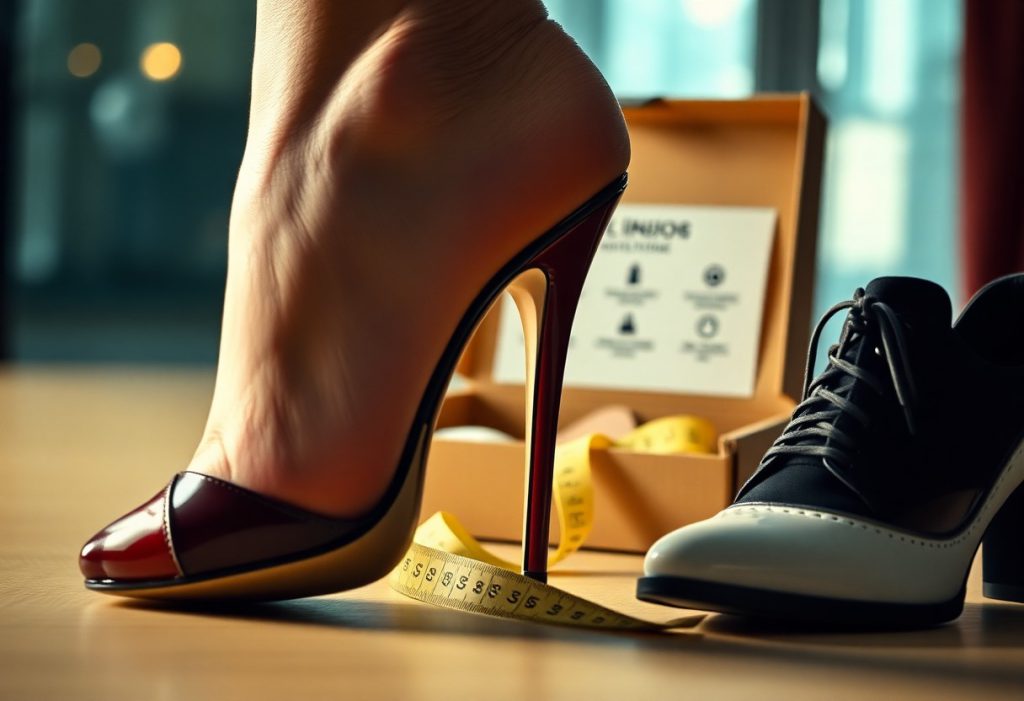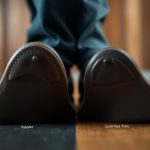Have you ever encountered the irritating issue of heel slip while trying to enjoy your favorite footwear? You are definitely not alone! Many shoe wearers face this common problem, which can lead to discomfort and an overall unsatisfactory fit. However, by understanding the causes behind heel slip and exploring effective prevention techniques, you can significantly improve your shoe-wearing experience. In this detailed guide, we will explore the complexities surrounding heel slip, highlighting the two main types, how to accurately identify them, and practical solutions to prevent and eliminate this issue. By the end of this guide, you will be equipped with essential insights to ensure that your shoes fit securely and comfortably.
Deep Dive into Heel Slip: Understanding Causes, Effects, and Practical Solutions
Before we explore the intricate details of Heel slip, it’s important to understand the basic principles that govern this issue. Heel slip occurs when your heel shifts out of its designated position within the shoe, which can lead to discomfort and compromise the overall fit. Understanding this phenomenon is crucial for anyone who wishes to maintain both comfort and style in their footwear choices. By grasping the various factors that contribute to heel slip, you can make informed decisions about your shoe selections and enhance your overall foot health.
Understanding the Two Primary Types of Heel Slip You Might Encounter
Heel slip can generally be classified into two main categories:
- Shoes that are too large, where your heel easily slips out of the shoe, or
- Shoes that fit well but have a stiff heel counter or slippery leather, which can cause slight movements in the heel area.
The secret to effectively addressing heel slip lies in correctly identifying which type you are experiencing. Understanding whether your shoe is too big or simply needs some time to adapt will help you take the right steps towards a better fit.
| Type of Heel Slip | Description |
| Too Big | Your heel easily comes out of the shoe while walking, indicating a poor fit. |
| Fits but Stiff/Slick | Slight heel movement occurs due to a stiff heel counter or slippery leather material. |
| Narrow Heel | Your foot has a naturally narrow heel, complicating the search for the perfect fit. |
| BREAK-IN | The leather gradually softens and conforms to your foot over time, which can help minimize heel slip. |
Identifying Heel Slip: Recognizing the Problem Effectively
Research shows that about 80% of individuals can tell when a shoe is excessively large. However, the real challenge is distinguishing whether slight heel movement is due to the shoe being too small or simply needing a break-in period. Additionally, it’s important to recognize that as you wear your shoes, the leather will soften, and the insole will mold to the shape of your foot, potentially affecting the fit. So, how can you differentiate between acceptable heel slip and a shoe that is poorly fitted?
Pinpointing the Underlying Causes of Heel Slip
If you’re struggling with heel slip, identifying the root cause is essential for effective resolution. Two primary factors can lead to heel slippage in your shoes, which we will explore in detail.
Determining Whether Your Shoes Are Simply Too Large
To assess if your shoes are indeed too large, try tightening the laces completely. If your heel continues to slip out, this is a clear indicator of a fit issue. You should never be able to walk out of your shoes or easily slip them off without first undoing the laces. Achieving a proper fit is crucial for ensuring both comfort and security while wearing your shoes.
Understanding the Impact of a Stiff Heel Counter and New Leather on Fit
Digging deeper, two significant elements can contribute to heel slip: a stiff heel counter and new, slippery leather. Even if your shoes fit adequately, these factors can cause minor movements of your heel. When you first wear new shoes, the stiffness of the heel counter combined with new leather may result in some heel movement. However, with continued wear, the leather will soften, and the heel counter will gradually adapt to the contour of your heel, leading to a more secure fit. This adaptation process typically takes about 7-10 wears, and it’s a normal aspect of breaking in new footwear.
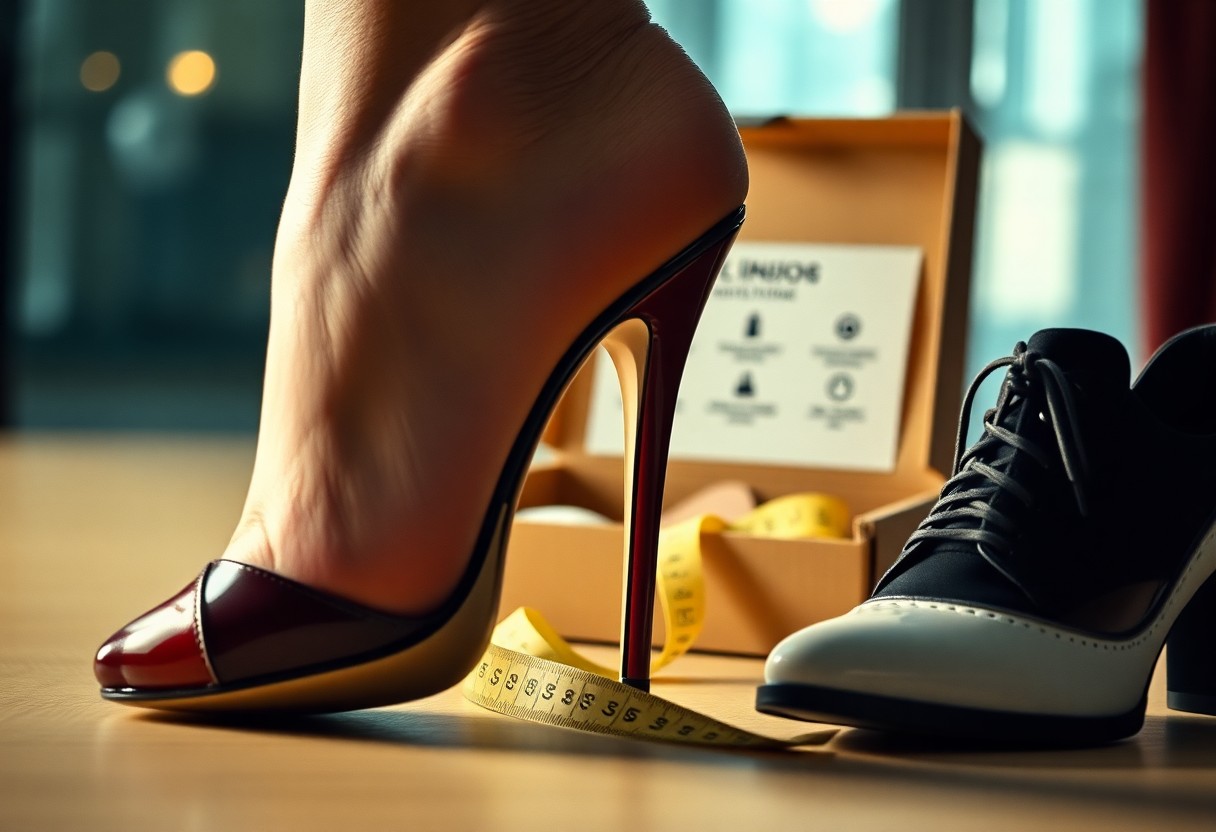
Proven Strategies for Preventing Heel Slip in Your Footwear
Preventing heel slip is most effectively achieved through proactive measures when purchasing and breaking in your shoes. By recognizing the importance of proper fit and the break-in process, you can substantially reduce the likelihood of heel slippage, resulting in a more comfortable and secure fit for your shoes.
Prioritizing Proper Shoe Fit for Maximum Comfort
To attain a comfortable and secure fit, it is crucial to select shoes that conform well to your feet. Avoid purchasing shoes that are excessively large, as this can lead to heel slip and overall discomfort. Make it a habit to try on shoes before making a purchase, and take the time to walk around in them to ensure they feel comfortable and secure. A proper fit is essential in preventing heel slip.
Mastering the Art of Breaking in Your Shoes Correctly
Properly breaking in your shoes can also play a vital role in preventing heel slip. When you first wear your shoes, the leather usually feels stiff, and the heel counter remains upright, which may lead to some movement in the heel area. However, as you continue to wear the shoes, the leather will begin to soften, and the heel counter will gradually adapt to the shape of your heel, resulting in a more secure fit. Shoes that initially fit well may still require a break-in period to achieve optimal comfort. This break-in process typically takes about 7-10 wears, and it’s important to remain patient and not become discouraged if you initially experience some heel movement. By correctly breaking in your shoes, you can enjoy a comfortable, secure fit and minimize the risk of experiencing heel slip.
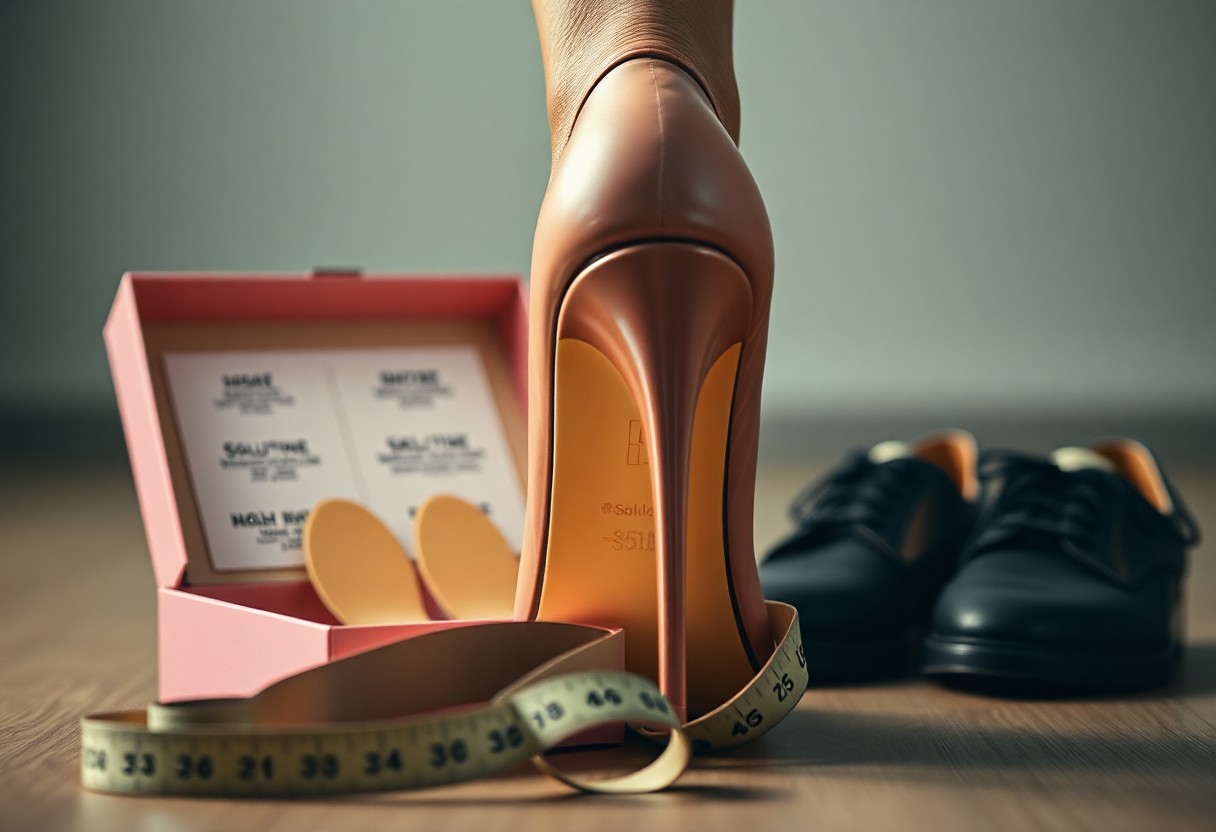
The Essential Role of Insole and Heel Counter in Achieving the Perfect Fit
When it comes to tackling heel slip, two key components are crucial: the insole and the heel counter. Understanding how these elements work together is vital for achieving a secure and comfortable fit.
Exploring the Insole and Its Impact on Shoe Fit
As you wear your shoes, your body weight begins to compress the insoles, creating an imprint of your feet that allows you to sink deeper into the shoes. This process enhances the overall fit because sinking down even slightly allows for a tighter grip in the heel area. When your foot is positioned higher, even by just 1mm, the chances of experiencing heel slip increase significantly compared to when you are securely locked in.
Examining the Importance of Heel Counter Material and Its Molding Properties
One of the primary contributors to heel slip is the stiffness of the heel counter, especially when the leather is new and slippery. However, with consistent wear, the material between the leather and the lining starts to mold to the shape of your heel, providing a better grip. Even though the heel counter may feel stiff at first, it will eventually conform to your heel shape as you wear the shoes. As you sink into the footbed, the combination of these factors will contribute to a more secure fit in the heel area. While this process may take time, it is a normal part of breaking in a new pair of shoes.
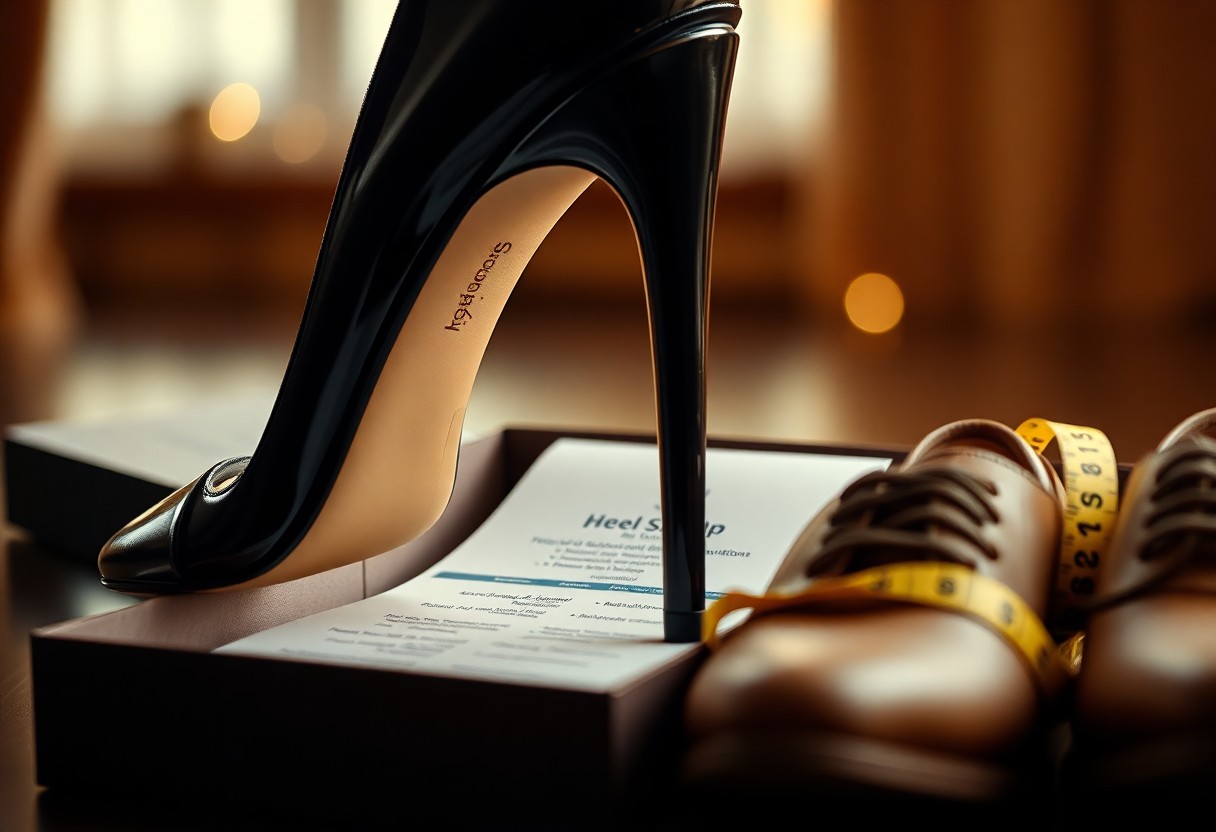
Achieving the Perfect Fit: Your Guide to Shoes
To ensure a comfortable and secure fit, determining the right shoe size is essential. This can be somewhat challenging, particularly when addressing the issue of heel slip.
Effective Guidelines for Trying on Shoes in Store
When trying on shoes at the store, aim to do so in the afternoon when your feet are likely to be slightly swollen. Wear the same type of socks or hosiery that you plan to wear with the shoes. Walk around the store to confirm that the shoes feel comfortable and do not slip off your heels during movement. This is crucial to ensuring that you select a pair that fits well and prevents heel slippage during regular wear.
Understanding Acceptable Heel Movement During the Break-In Phase
A slight degree of heel movement can be a normal aspect of the break-in process. Don’t be alarmed if you notice some movement in the heel area; this doesn’t automatically indicate that the shoes are too large. It’s important to remember that the leather will soften and adapt to your foot shape over time. As you continue to wear your shoes, the heel counter will adjust to fit your heel snugly, ensuring a better grip in the heel area. Thus, accepting some degree of heel play can be a normal part of the process and isn’t necessarily a sign of an improper fit.
Practical Solutions for Addressing Narrow Heels and Heel Slip
Having a narrow heel doesn’t mean you have to settle for a lifetime of dealing with heel slip. There are several effective strategies to address this issue, which we will discuss below.
Exploring Custom Shoe Options for a Perfect Fit
If you find it difficult to achieve a proper fit with ready-to-wear shoes, you may want to consider custom options. This could involve investing in bespoke shoes tailored specifically to your measurements or working with a cobbler to modify your existing footwear to better accommodate your unique foot shape. Customized shoes can provide the perfect balance of comfort and style, reducing the risk of heel slippage.
Embracing Fit Imperfections While Finding the Right Shoes
Finding the perfect fit in ready-to-wear shoes can be challenging, especially for individuals with narrow heels. Learning to accept that a small degree of heel play is quite normal can be a liberating mindset shift. Over time and with regular wear, the leather will conform to your foot, improving the overall fit. Breaking in your shoes is a natural and necessary process that can help mitigate heel slip issues. By accepting these imperfections and allowing time for your shoes to adapt, you can achieve a comfortable and secure fit, even with ready-to-wear options.
Recap of Key Insights on Heel Slip: Causes and Solutions
In summary, you now possess a deeper understanding of heel slip, its underlying causes, effective prevention techniques, and practical solutions. By being able to differentiate between a shoe that is too large and one that has a stiff heel counter, you’ll be better equipped to make informed choices when trying on new footwear. Remember, breaking in your shoes is essential, as the leather will gradually mold to your foot over time, leading to a more secure fit. If you continue to experience significant heel slip, consider exploring custom options to find the ideal fit for your unique foot shape.
Common Questions about Heel Slip: Expert Answers
What is heel slip, and how does it affect my shoe fit?
Heel slip refers to the movement of your heel within the shoe, which can result from either the shoe being too large or a stiff heel counter combined with slippery new leather. There are two distinct types of heel slip: one occurring when the shoe is excessively large, and the other when the shoe fits well but the heel counter remains stiff, causing some movement. Understanding these differences is crucial for achieving a comfortable and secure shoe fit.
How can I effectively prevent heel slip, and what solutions are available?
To prevent heel slip, ensuring a proper fit is of utmost importance. If you determine that the shoe is too large, try tightening the laces to see if that helps. If the heel counter feels stiff, it’s advisable to break in the shoe by wearing it regularly, as the leather will soften and conform to the shape of your foot over time. Additionally, consider the insole and heel counter, as both significantly influence heel slip. If you continue to experience heel slip after breaking in your shoes, you might have a narrow heel, and exploring custom options may be necessary.
How can I tell if I have a narrow heel, and what are my options?
If you consistently experience heel slip with most shoes, even after breaking them in, it’s possible that you have a narrow heel. In this situation, finding a proper fit without custom solutions can be quite challenging. Consider consulting a professional shoe fitter or exploring custom shoe options to secure a comfortable and well-fitting pair.
The Article Heel slip explained: causes, prevention, and solutions appeared first on My Shoes Finder
The Article Heel Slip: Causes, Prevention, and Effective Solutions Was Found On https://limitsofstrategy.com
